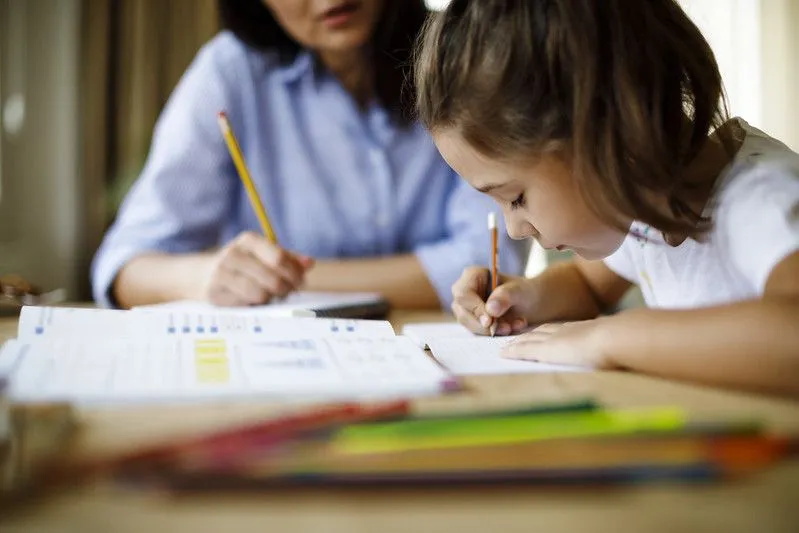FOR AGES 7 YEARS TO 11 YEARS
Sentences can be tricky to get your head around, as it's easy to forget the differences between the building blocks that make up sentences.
Once children start to see sentences as made up of different blocks or parts, it can become easier to identify which blocks make up a particular sentence type. To understand what a compound sentence is, it’s essential to get to grips with understanding the basics of a sentence. This will be of use in identifying the difference between compound and complex sentences.

Put simply, a compound sentence is a sentence that joins two simple clauses together using a connective. Connectives are words such as ‘and’, ‘or’ and ‘but’ which are used in compound sentences to join the ideas.
Sentences are made up of clauses. A clause is a group of words that contains a subject (the person or thing performing the action, such as ‘I’, or ‘the cat’) and the verb (the action being performed, such as ‘jumped’). A sentence that has only one clause - a subject and verb - is known as a simple sentence.
However, in a compound sentence, two independent clauses come together, joined by a comma or conjunction (‘and’, ‘but’, ‘if’). Through joining two clauses it becomes a sentence that expresses two complete thoughts. This makes it more complex as you can express two ideas within one sentence, advancing your writing and speech further.

Image © iStock
Compound sentences allow us to create more elegant sentences, helping us to avoid the choppiness of repeated simple sentences. It’s good for writing to have a variety of different types, like compound and complex. For kids, a compound sentence should express two complete ideas in the simplest way. For now, their compound sentences don’t need to use a semicolon, as it is easy to misuse. We find it’s always better to write in the clearest way, whether that is in shorter sentences, as we don’t want to confuse our reader. This is something kids should learn early on, getting the simple compound right.
To help kids identify what a compound sentence is and how to use compound, teaching them to use coordinating conjunctions will be really helpful. Coordinating conjunctions help link clauses together.
The three main coordinating conjunctions are:
And
If
But

Image © iStock
The cat jumped on the roof, and she slept there all day.
In the above example, the verbs in each clause are underlined.
The cat jumped on the roof, and she slept there all day.
This time, the subject in each clause is underlined.

Image from iStock
We briefly mentioned simple sentences earlier, which helps us to understand compound sentences. Compound sentences help us to understand complex sentences. The third sentence type is complex sentences. Complex sentences allow you to add information to a sentence through layers (more building blocks).
A complex sentence will need to contain an independent clause and one or more dependent clauses. Dependent clauses are also known as subordinate clauses. What this means is that the independent clause can stand alone as a sentence without the added dependent clause(s), but the added dependent clauses cannot stand alone as their own sentence.
For example:
Because my food went cold, I heated it up in the microwave.
Underlined is the independent clause. The first part of the sentence cannot stand alone as a sentence by itself, so it is dependent on the independent clause.

Image from iStock
Complex sentences don’t have to always start with the dependent clause, they can come after the independent clause too. Like here:
My sister wanted to go for a walk, although it was still raining.
‘Although it was still raining’ cannot stand alone as a sentence in this case because it is not a complete thought - it doesn't contain a verb and a subject.
Certain words are useful when it comes to complex sentences. These are known as subordinating conjunctions, words that help you to add more information to create a dependent clause. For example:
Although
Because
When
After
Before
Even though
Read The Disclaimer
At Kidadl we pride ourselves on offering families original ideas to make the most of time spent together at home or out and about, wherever you are in the world. We strive to recommend the very best things that are suggested by our community and are things we would do ourselves - our aim is to be the trusted friend to parents.
We try our very best, but cannot guarantee perfection. We will always aim to give you accurate information at the date of publication - however, information does change, so it’s important you do your own research, double-check and make the decision that is right for your family.
Kidadl provides inspiration to entertain and educate your children. We recognise that not all activities and ideas are appropriate and suitable for all children and families or in all circumstances. Our recommended activities are based on age but these are a guide. We recommend that these ideas are used as inspiration, that ideas are undertaken with appropriate adult supervision, and that each adult uses their own discretion and knowledge of their children to consider the safety and suitability.
Kidadl cannot accept liability for the execution of these ideas, and parental supervision is advised at all times, as safety is paramount. Anyone using the information provided by Kidadl does so at their own risk and we can not accept liability if things go wrong.
Kidadl is independent and to make our service free to you the reader we are supported by advertising.
We hope you love our recommendations for products and services! What we suggest is selected independently by the Kidadl team. If you purchase using the buy now button we may earn a small commission. This does not influence our choices. Please note: prices are correct and items are available at the time the article was published.
Kidadl has a number of affiliate partners that we work with including Amazon. Please note that Kidadl is a participant in the Amazon Services LLC Associates Program, an affiliate advertising program designed to provide a means for sites to earn advertising fees by advertising and linking to amazon.
We also link to other websites, but are not responsible for their content.
Was this article helpful?



Browse Category



We’ll send you tons of inspiration to help you find a hidden gem in your local area or plan a big day out.



Check your inbox for your latest news from us. You have subscribed to:
Remember that you can always manage your preferences or unsubscribe through the link at the foot of each newsletter.